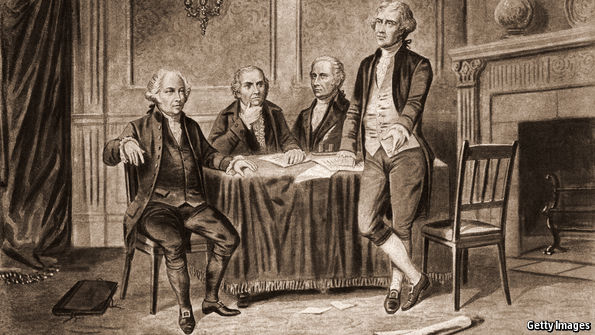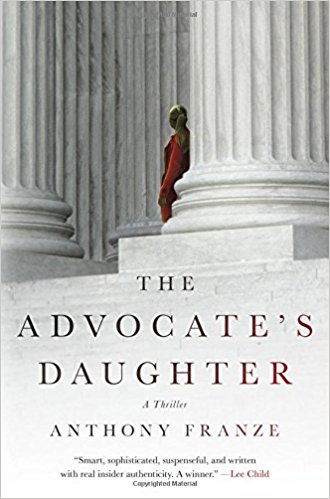 Article I, Section 9, Clause 8 of the United States Constitution (known as the Emoluments Clause) reads:
Article I, Section 9, Clause 8 of the United States Constitution (known as the Emoluments Clause) reads:
“No Title of Nobility shall be granted by the United States: And no Person holding any Office of Profit or Trust under them, shall, without the Consent of the Congress, accept of any present, Emolument, Office, or Title, of any kind whatever, from any King, Prince, or foreign State.”
University of St. Thomas School of Law Associate Professor of Law Robert J. Delahunty’s essay on the Heritage Guide to The Constitution is worth reading for an understanding of this obscure provision Article VI of the Articles of Confederation was the source of the Constitution’s prohibition on federal titles of nobility and the so-called Emoluments Clause. The clause sought to shield the republican character of the United States against corrupting foreign influences.
The prohibition on federal titles of nobility—reinforced by the corresponding prohibition on state titles of nobility in Article I, Section 10, and more generally by the republican Guarantee Clause in Article IV, Section 4—was designed to underpin the republican character of the American government. In the ample sense James Madison gave the term in The Federalist No. 39, a republic was “a government which derives all its powers directly or indirectly from the great body of the people, and is administered by persons holding their offices during good behavior.”
Republicanism so understood was the ground of the constitutional edifice. The prohibition on titles of nobility buttressed the structure by precluding the possibility of an aristocracy, whether hereditary or personal, whose members would inevitably assert a right to occupy the leading positions in the state.
Further, the prohibition on titles complemented the prohibition in Article III, Section 3, on the “Corruption of Blood” worked by “Attainder[s] of Treason” (i.e., the prohibition on creating a disability in the posterity of an attained person upon claiming an inheritance as his heir, or as heir to his ancestor). Together these prohibitions ruled out the creation of certain caste-specific legal privileges or disabilities arising solely from the accident of birth.
In addition to upholding republicanism in a political sense, the prohibition on titles also pointed to a durable American social ideal. This is the ideal of equality; it is what David Ramsey, the eighteenth-century historian of the American Revolution, called the “life and soul” of republicanism. The particular conception of equality denied a place in American life for hereditary distinctions of caste—slavery being the most glaring exception. At the same time, however, it also allowed free play for the “diversity in the faculties of men,” the protection of which, as Madison insisted in The Federalist No. 10, was “the first object of government.” The republican system established by the Founders, in other words, envisaged a society in which distinctions flowed from the unequal uses that its members made of equal opportunities: a society led by a natural aristocracy based on talent, virtue, and accomplishment, not by an hereditary aristocracy based on birth. “Capacity, Spirit and Zeal in the Cause,” as John Adams said, would “supply the Place of Fortune, Family, and every other Consideration, which used to have Weight with Mankind.” Or as the Jeffersonian St. George Tucker put it in 1803: “A Franklin, or a Washington, need not the pageantry of honours, the glare of titles, nor the pre-eminence of station to distinguish them….Equality of rights…precludes not that distinction which superiority of virtue introduces among the citizens of a republic.”
Similarly, the Framers intended the Emoluments Clause to protect the republican character of American political institutions. “One of the weak sides of republics, among their numerous advantages, is that they afford too easy an inlet to foreign corruption.” The Federalist No. 22 (Alexander Hamilton). The delegates at the Constitutional Convention specifically designed the clause as an antidote to potentially corrupting foreign practices of a kind that the Framers had observed during the period of the Confederation. Louis XVI had the custom of presenting expensive gifts to departing ministers who had signed treaties with France, including American diplomats. In 1780, the King gave Arthur Lee a portrait of the King set in diamonds above a gold snuff box; and in 1785, he gave Benjamin Franklin a similar miniature portrait, also set in diamonds. Likewise, the King of Spain presented John Jay (during negotiations with Spain) with the gift of a horse. All these gifts were reported to Congress, which in each case accorded permission to the recipients to accept them. Wary, however, of the possibility that such gestures might unduly influence American officials in their dealings with foreign states, the Framers institutionalized the practice of requiring the consent of Congress before one could accept “any present, Emolument, Office, or Title, of any kind whatever, from…[a] foreign State.”
Like several other provisions of the Constitution, the Emoluments Clause also embodies the memory of the epochal constitutional struggles in seventeenth-century Britain between the forces of Parliament and the Stuart dynasty. St. George Tucker’s explanation of the clause noted that “in the reign of Charles the [S]econd of England, that prince, and almost all his officers of state were either actual pensioners of the court of France, or supposed to be under its influence, directly, or indirectly, from that cause. The reign of that monarch has been, accordingly, proverbially disgraceful to his memory.” As these remarks imply, the clause was directed not merely at American diplomats serving abroad, but more generally at officials throughout the federal government.
The Emoluments Clause has apparently never been litigated, but it has been interpreted and enforced through a long series of opinions of the Attorneys General and by less-frequent opinions of the Comptrollers General. Congress has also exercised its power of “Consent” under the clause by enacting the Foreign Gifts and Decorations Act, which authorizes federal employees to accept foreign governmental benefits of various kinds in specific circumstances.
Another fascinating read on the Emoluments Clause is the December 2016 Brookings Institute study titled The Emoluments Clause: Its Text, Meaning, and Application to Donald J. Trump co-authored by Norman L. Eisen, Richard Painter, and Laurence H. Tribe.


 Also in OneSearch is a review by Iwan Morgan of The Cambridge Companion to John F. Kennedy by Andrew Hoberek available at this
Also in OneSearch is a review by Iwan Morgan of The Cambridge Companion to John F. Kennedy by Andrew Hoberek available at this 

 The Unexpected Scalia: A Conservative Justice’s Liberal Opinions
The Unexpected Scalia: A Conservative Justice’s Liberal Opinions
 Readers interested in learning more about NAFTA can review the Brooklyn Law School Library volume
Readers interested in learning more about NAFTA can review the Brooklyn Law School Library volume  The BLS Library has in its collection a related title, an e-book
The BLS Library has in its collection a related title, an e-book  The BLS Library collection includes titles related to social aspects of American life. One such title from the New Book List that stands out is
The BLS Library collection includes titles related to social aspects of American life. One such title from the New Book List that stands out is  The BLS Library has ordered for its collection a related title,
The BLS Library has ordered for its collection a related title,  In the past few years, there has been increased discussion of the growth in America’s prison population to more than 2 million Americans incarcerated, many of them drug offenders, for periods that seem far too long. Since the publication in 2010 of Michelle Alexander’s
In the past few years, there has been increased discussion of the growth in America’s prison population to more than 2 million Americans incarcerated, many of them drug offenders, for periods that seem far too long. Since the publication in 2010 of Michelle Alexander’s  A search of the BLS Library OneSearch platform will lead readers to a recent review of Hinton’s book in the February 2017 issue of the American Journal of Public Health (Vol. 107 Issue 2) under the title Reckoning with the Rise of the Carceral State by David H. Cloud. For more on the topic, the BLS Library has ordered for its collection a new title,
A search of the BLS Library OneSearch platform will lead readers to a recent review of Hinton’s book in the February 2017 issue of the American Journal of Public Health (Vol. 107 Issue 2) under the title Reckoning with the Rise of the Carceral State by David H. Cloud. For more on the topic, the BLS Library has ordered for its collection a new title,  Last year, the Brooklyn Law Library added to its collection
Last year, the Brooklyn Law Library added to its collection  Books and essays about the art of writing well go back a long time. In 1947, English novelist, essayist, journalist, and critic George Orwell (born Eric Arthur Blair 1903 – 1950) and author of
Books and essays about the art of writing well go back a long time. In 1947, English novelist, essayist, journalist, and critic George Orwell (born Eric Arthur Blair 1903 – 1950) and author of  Article I, Section 9, Clause 8 of the United States Constitution (known as the Emoluments Clause) reads:
Article I, Section 9, Clause 8 of the United States Constitution (known as the Emoluments Clause) reads: